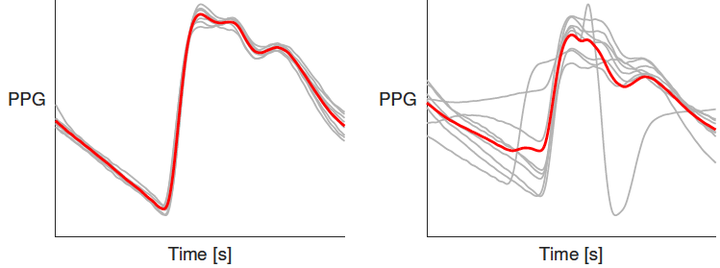Signal-quality indices for the electrocardiogram and photoplethysmogram: derivation and applications to wireless monitoring
 Source: P.H. Charlton, Continuous respiratory rate monitoring… (CC BY 4.0)
Source: P.H. Charlton, Continuous respiratory rate monitoring… (CC BY 4.0)
Abstract
The identification of invalid data in recordings obtained using wearable sensors is of particular importance since data obtained from mobile patients is, in general, noisier than data obtained from nonmobile patients. In this paper, we present a signal quality index (SQI), which is intended to assess whether reliable heart rates (HRs) can be obtained from electrocardiogram (ECG) and photoplethysmogram (PPG) signals collected using wearable sensors. The algorithms were validated on manually labeled data. Sensitivities and specificities of 94% and 97% were achieved for the ECG and 91% and 95% for the PPG. Additionally, we propose two applications of the SQI. First, we demonstrate that, by using the SQI as a trigger for a power-saving strategy, it is possible to reduce the recording time by up to 94% for the ECG and 93% for the PPG with only minimal loss of valid vital-sign data. Second, we demonstrate how an SQI can be used to reduce the error in the estimation of respiratory rate (RR) from the PPG. The performance of the two applications was assessed on data collected from a clinical study on hospital patients who were able to walk unassisted.